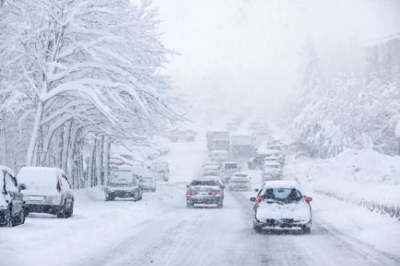Despite Predictions of Harsh Winter, Most U.S. Drivers Will Travel Without Winter Tires this Season
 |
Bridgestone survey reveals only 25 percent of snowbelt drivers will equip their vehicle with winter tires
NASHVILLE, TN -- Nov. 28, 2014: Winter weather officially has arrived, but it won't stop Americans from hitting the road this holiday travel season. According to an online survey commissioned by Bridgestone and fielded by Harris Poll in September 2014*, 90 percent of Americans have driven in winter weather at some point. Among the 84 percent of snowbelt drivers who will prepare their car for winter weather, only a quarter (25 percent) plan to equip or already have equipped their vehicle with winter tires this season.
"The results of our survey suggest many U.S. drivers are not as prepared as they could be for winter's worst," said Robert Saul, Senior Product Manager, Bridgestone Americas. "Conditions on the road can change rapidly in the winter season. Winter tires are a smart choice, because they have specialized technology that is optimized for traction, braking and handling on cold, icy and snow-covered roads."
While all tire rubber will begin to stiffen as temperatures drop below freezing, the latest generations of winter tires maintain their elasticity even at extremely low temperatures. All-season tires are designed with both winter and summer performance in mind, but do not offer maximum performance in either season.
"In winter conditions, how you drive matters just as much as having the right type of tires on your vehicle — both are absolutely key," said Mark Cox, Director of the Bridgestone Winter Driving School in Steamboat Springs, Colorado. "I tell students at my school to remember to do only one thing at a time when they're driving on snow and ice-covered roads. For example, if you're braking, you shouldn't also attempt to turn the vehicle at the same time. Use all grip available for each input- braking, steering and accelerating."
Only 16 percent of U.S. drivers who have driven in winter weather have received formal winter driving education from a driving instructor, while two-thirds (66 percent) who have driven in winter weather taught themselves. Half of U.S. residents age 18+ (51 percent) have witnessed and/or been involved in a vehicle accident that was caused by winter driving conditions.
When it comes to preparing a vehicle for winter weather, Bridgestone encourages drivers to remember the four B's — battery, brakes, blades and Blizzak winter tires. Have an automotive service technician test the vehicle battery, check the brakes and inspect wiper blades to make sure all are in good working order.
According to the survey, three-fourths of American drivers (76 percent) are performing some sort of vehicle maintenance and checking under the hood to prepare for winter weather:
62 percent plan to check fluid levels in advance of inclement weather 61 percent said they will check the windshield wipers
60 percent will check tire pressure
51 percent said they will check the battery
46 percent will check the brakes
Bridgestone's survey also showed that winter driving is considered an unpleasant activity for some Americans. Among those who have driven in winter weather, 29 percent say the experience is as unpleasant as shoveling their driveway or sidewalk; a quarter (26 percent) find it as frustrating as waiting in Black Friday lines; and 24 percent equate the experience to pouring a bucket of ice water over their heads.
Survey Methodology
*This U.S. survey was conducted online within the United States between September 25th and 29th, 2014 among 2,031 adults (aged 18 and over) (among whom 576 live in snowbelt states - New York, Pennsylvania, Ohio, Michigan, Minnesota, Wisconsin, Maine, New Hampshire, North Dakota, South Dakota, Montana, Wyoming, Vermont) by Harris Poll on behalf of Bridgestone Americas via its Quick Query omnibus product. Figures for age, sex, race/ethnicity, education, region and household income were weighted where necessary to bring them into line with their actual proportions in the population. Propensity score weighting was used to adjust for respondents' propensity to be online.
All sample surveys and polls, whether or not they use probability sampling, are subject to multiple sources of error which are most often not possible to quantify or estimate, including sampling error, coverage error, error associated with nonresponse, error associated with question wording and response options, and post-survey weighting and adjustments. Therefore, the words "margin of error" are avoided as they are misleading. All that can be calculated are different possible sampling errors with different probabilities for pure, unweighted, random samples with 100 percent response rates. These are only theoretical because no published polls come close to this ideal.
Respondents for this survey were selected from among those who have agreed to participate in our surveys. The data have been weighted to reflect the composition of the adult population. Because the sample is based on those who agreed to participate in our panel, no estimates of theoretical sampling error can be calculated.


